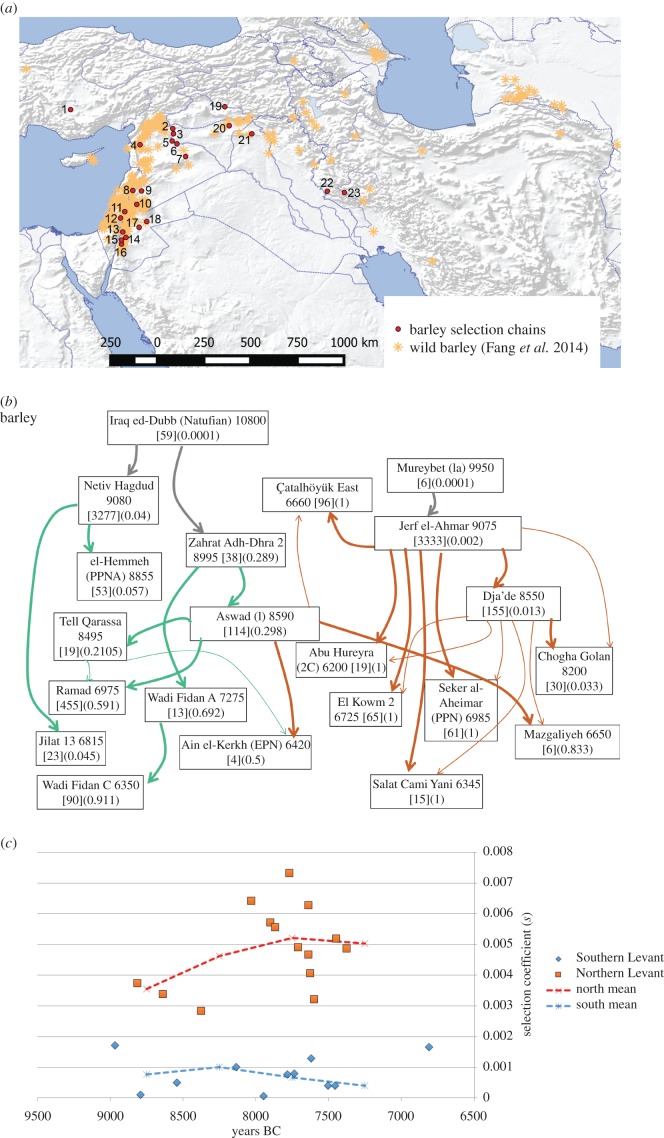Figure 3.
The evidence for the evolution of non-shattering in barley (Hordeum vulgare). (a) Map of evidence for barley domestication, indicating distribution of wild populations [44], and archaeological sites with rachis remains; sites numbered: 1. Çatalhöyük, 2. Dja'de, 3. Jerf el Ahmar, 4. Ain el-Kerkh, 5. Mureybet, 6. Abu Hureyra, 7. El Kowm 2, 8. Ramad, 9. Aswad, 10. Tell Qarassa, 11. Iraq ed-Dubb, 12. Netiv Hagdud, 13. Zahrat Adh-Dhra, 14. el-Hemmeh, 15. Wadi Fidan A, 16. Wadi Fidan C, 17. Jilat 7 and 13, 18. Azraq 31, 19. Salat Cami Yani, 20. Seker al-Aheimar, 21. Mazgaliyeh, 22. Chogha Golan, 23. East Chia Sabz. (b) Selection chains for barley. Boxes indicate site name, median age, sample size and proportion of non-shattering form. (c) Estimated selection coefficients (s) for different links in the selection chains in (b), indicating southern and northern averages for 500-year bins.

